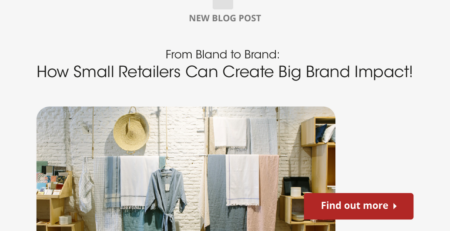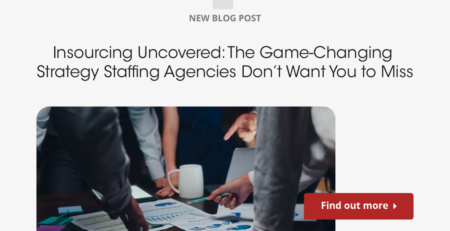Ethical Design For The Modern World
Design is supposed to make life better – but better for whom? Companies and users don’t share the same perspective. Businesses have to turn a profit while users are attracted to accessible, secure, enjoyable experiences.
The whole idea of design thinking is to build a bridge between these two camps. It’s vital for designers to understand the impact they have on the world so they can be intentionally ethical in their work.
Design inherently seeks to right wrongs. All designs have an ethics, but that doesn’t mean they’re ethical. Read on to learn everything you need to know about design ethics and how you can create more principled designs.
How Bad Can Design Be?
Maybe design ethics sound a bit dramatic. After all, we’re talking about apps and websites primarily. Other than data breaches, what’s the worst that could happen?
Design can miss its mark and release an unusable or dissatisfying product to enter the market. In some cases, the product can be so bad that it puts users in danger. Other times, the product can dupe customers with huge negative impacts on their lives.
Beyond the big, obvious failures, design can be dishonest. Misrepresenting what the product can or does do just to get something out of the user. Bad UI, for instance, frequently disguises the CTA button or greys out back and exit buttons so the user is pressured to continue.
This practice is referred to as dark pattern design. One common dark pattern design tactic is to annoy the user with popups or something else that gets in the way of the thing they’re actually trying to do. When the user is frustrated by this interruption, they’re more likely to click on anything to get back to what they were doing, including buttons that give consent to share personal data or even sign up for a service or mailing list.
Hiding unsubscribe buttons and using discouraging language to make users feel like they’re making the wrong decision (i.e. “No thanks, I don’t like saving money”) are also coercive. Sending users down a rabbit hole of menus and options is one way streaming services and social media sites get people to keep using their product or temporarily deactivate their account rather than deleting it altogether.
In the modern world, data has become incredibly valuable to companies. It’s a product in itself. While seedier sites will use dark pattern design to lure people into paying money or subscribing to services, reputable ones like Facebook use it to get users to agree to terms and services agreements that usually have caveats about data gathering and sharing within them.
Why do bad design tactics like this keep working? It partly has to do with human psychology. But it’s also linked to the fundamentals of design the way we practice it today.

Is Design Thinking Ethical?
Hopefully, you’re already familiar with design thinking or at least its basic tenets. In brief, it’s an iterative process that seeks to turn insights from user research into desirable features of a design. Design thinking aims to satisfy users’ needs and business goals at the same time.
The thing is, a website or app built via design thinking uses the same tools as dark pattern design. Is DPD a corruption of design, something good twisted into something nefarious? Yes. This tells us something about design and how we can engage with it more ethically.
In UX design, nudges are minor signals in the product that try to influence the user’s choice without limiting their options. This is done with emotionally coded language, animation, personalized notifications, rewards programs, social reinforcement, chunking processes, promotions, reciprocation, and ready-made selections like a pre-checked box.
Design’s dark side can put these tools to unsavory purposes in many ways. Let’s take chunking as an example.
Chunking is a process of either breaking information units into smaller kernels or combining small units into large ones. In UX and design more broadly, this applies primarily to content organization and to the user journey.
A great ethical use of chunking can be found on the apps and websites for most major airlines. We actually have to do a whole bunch of things to get that seat on a plane but we hardly realize it because of the way the process is laid out by UX designers. Hotels work similarly.
You don’t have to put in your passport right away. All you need to do is pick your travel destination and the dates you want to fly. Then, you select your preferred flight and enter payment information.
That’s not the end of the process, but the whole journey has been chunked so that you reach this milestone and feel accomplished. You’re going to be on the plane. You can select seats, buy upgrades, purchase additional baggage, and enter more detailed travel information later.
See, airlines want users to get to the biggest checkpoint without issue. When you buy the ticket, that’s the most money you’ll give to the airline in the process, with the exception of some budget companies.
Is this nefarious? Not really. Airlines have to make money and the number one thing we want from them is to provide flights. So chunking gives us a win-win situation here.
As for how the Dark Side corrupts this useful tool, it’s primarily used to sneak information in. While a process on an app or website could feel well organized into chunks that help us get where we’re going more easily, designers could also hide suspect user agreements and hidden fees.
Budget airlines love this trick. They let you add baggage later and make it difficult to discover that the baggage fee will in many cases be more expensive than the ticket itself.
But that’s not the worst of it. Many companies offering travel reservations of all kinds are known to throw in messages of urgency: 10 people booked this hotel today! Only 5 seats left!
Others tweak small features. We’re used to having our experiences presented in chunks, so when we see that everything is streamlined, we might move faster. Or, at least, we’re reassured. So one dastardly UX trick is to include unchecked checkboxes for opting OUT of options rather than opting IN like we’re used to.
Since clicking a button or checkbox makes it feel like we’re adding something else to our order, we avoid such boxes. Suddenly, we’re the happy recipients of newsletters, magazines, and promotional material we didn’t ever want.
The takeaway is this: you might be designing with the best of intentions but that doesn’t make design inherently ethical.
Ethical Design For The 21st Century
We’ve had enough of the bad for now. Let’s discuss ways we can beat back the dreaded figure of Unethical Design.
If you’re using a design thinking approach, you already start by building empathy with your users. You’re not the user, you have to talk to them to see what they really want, how they really behave.
Something that happens all the time, like it or not, is a clash between the users’ desires and the goals of the business. It makes sense, in some way: the whole reason we have marketing is to make our products stand out against the competition and entice people into buying.
Companies have to make money. That’s the name of the game. But users don’t always have any desire to make a purchase, nor do they particularly want to sign up for a newsletter every time they go to a new webpage.
Design thinking has progressed far enough that companies are now conduits of information. Content is king in the world of SEO and branding. To that extent, at least, companies have listened to the desires of the public. But tricky or dishonest design is very tempting once the freebies have been doled out.
That’s where designers have a duty to step in. You are not only a creative – you’re also an advocate for the user. We’re not saying that all managers are completely disinterested in the users and their wants or needs, but some of them certainly are. Designers can step in.
The odds anyone is going to convince the company to shoot itself in the foot by giving out its products for free are at absolute zero. But designers – particularly when they’re armed with thorough and illuminating user research – have the ability and responsibility to explain how content is branding and a long-term investment that will earn dedicated and loyal customers in the end.
For marketing professionals, emphasizing social innovation and outreach programs as PR and honest branding will directly benefit communities. Like dark pattern design bastardizes design thinking, so can social innovation be tainted by ne’er do well companies seeking to launder their image. Even in that case, designers and other creatives can justify the means and make the best of a bad situation. Some social innovation is better than none.
What Does Design Need To Be Ethical?
Designers build journeys and experiences into their projects. In today’s world, there are a few things that should be included on such projects for them to be ethically sound.
Granted, creatives who have specialized in a certain industry will understand what ethical standards should look like in their area. This is a general list, but it touches on some important principles.
- Security & Privacy
Maybe this isn’t the first item on your personal list, but in the new data goldrush users absolutely have a right to know what data is being gathered and what happens to it. All too often, personal data is sold to other companies or improperly stored and disposed of. Ask any victim of identity fraud linked to data breaches how severely it can impact a life.
Organizations have implemented some degree of data protection for internet users, such as the General Data Protection Regulation passed in 2018. The GDPR poses high fines for breaching a specific list of privacy and security standards for anyone who lives within the EU.
- Transparency
Everybody knows that companies need to make money and want to convince people to engage with their brand and spend money on their products and services. Edgy marketing that shows viewers a peek behind the curtain, so to speak, is a bit dated. It’s better to be open about where the company stands without resorting to meaningless word salad.
Designers shouldn’t turn to abrasive techniques like irreverent copy (unless that suits the branding). Rather, it would be much more effective to state the goals of certain campaigns and reveal how and why companies are providing all the content they’re becoming known for providing.
Another important principle of transparency in UX is that users should be completely aware when actions are being taken. If they’re incurring a charge, subscribing or canceling a subscription, or making any kind of change to their existing account, the design should make them aware and let them know when they’re doing something that can’t be undone without penalties.
- Guileless Function
Social media is infamous at this point for its impact on mental health and the wide array of design features sites use to keep people scrolling and signing back in. The idea of the “like” set up a reward stimulus that users flock back to. Emotional manipulation is also commonly presented to people who want to delete their accounts, e.g. “Don’t go, your friends will miss you,” etc.
Being guileless in your design means you aren’t out to trick people. There’s no need to use an infinite scroll that entices people to spend hours rolling over posts they basically forget immediately afterward. A more ethical design feature might present the user with stopping points.
It’s not that users are always being duped. In many cases, they do want to keep scrolling and interacting with inane social media posts. The larger point is that ethical design thinking should probably discourage what’s bad in our nature.
People have the right to live lives of depth and complexity. While it’s understandable that streaming services and social media sites want people to spend lots of time using their services, we also have better things to be doing lots of the time. Ethical design should reflect that.
- Accessibility
If your product works and benefits people, it’s only natural that it should thus be available to as many people as possible. This is one area where ethical design dovetails nicely with business interests. The company’s goals also involve getting products to as many people as possible.
Perhaps this is the root of design ethics and a future course for design thinking to take. A blind rush to entice is no longer the way business is conducted. It’s designers and the creatives who work alongside them who turn feedback from users into enjoyable products that make life better for the people who use them.
The second half of that respectable effort is to make sure it’s beneficial to everyone. Accessibility issues are widely discussed and there is no shortage of books and articles dedicated to making designs for everyone.
Accessibility is an ideal framework for bridging the gap between the lofty ideals of good design and the economic desires of companies. When you endeavor to design with principle, this is the kind of access point you should be looking for. It’s everything that’s best about design thinking and a big part of the reason why it’s so effective.

Conclusion:
Design ethics is a wide field with many considerations. It’s not always easy to satisfy business goals in a way that totally reverberates with the users. But it’s vital to try if we want to achieve the stated goals of design thinking – to improve people’s lives.
Technology and social media have totally altered the way design works. It only makes sense that it has also radically changed the kinds of ethical considerations designers and other creatives have to make to ensure that users’ rights are protected.
We only managed to scratch the surface of design ethics and the way some companies and designers have made attempts to subvert them. As you continue your work, many new issues are likely to arrive. Hopefully, the information in this guide will serve as a strong bedrock for more principled and ethical design work in the future.












